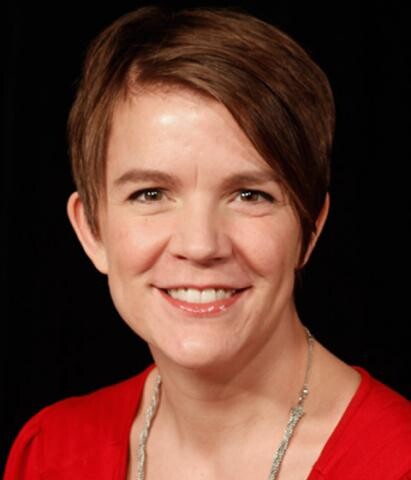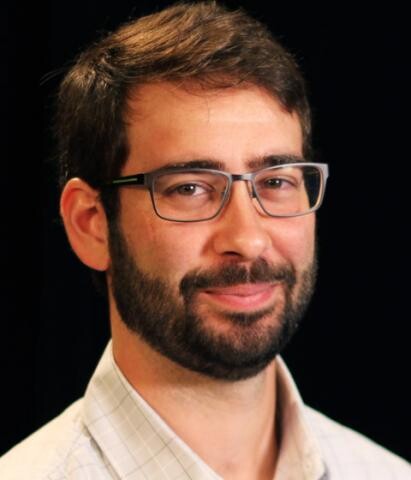
Super Bowl LII (that's 52) kicks off this Sunday, Feb. 4, when the Philadelphia Eagles will try to prevent the New England Patriots from winning their sixth title since 2002.
#SuperBowl bound.#TransformationTuesday with @TheRealVRVJ, @RBRex2022 and @NathanGerry.#GBR #ProBigRed pic.twitter.com/6e6Ube506Q
— ❄️ Nebraska Football ❄️ (@HuskerFBNation) January 30, 2018
For a record 25th consecutive year, the Super Bowl will feature at least one former Husker player. This year, three Huskers have made the trip to Minneapolis: New England running back Rex Burkhead and defensive tackle Vincent Valentine, along with Philadelphia safety/linebacker Nathan Gerry.
But the University of Nebraska-Lincoln also engages in teaching, research and outreach with ties to the biggest of big games. How so? Read on.
This game keeps interrupting my commercials
Some watch the Super Bowl for the game itself. Others prefer the commercials, some of which become cultural flashpoints among football fans and novices alike.
For several years, the student-run advertising agency Jacht has partnered with Omaha-based agency Bailey Lauerman to evaluate the year’s highest-profile TV spots, which will cost upward of $5 million per 30 seconds of airtime. The day after the Super Bowl, Jacht’s five student directors will make a 6:30 appearance on Lincoln’s "10/11 This Morning” to reveal their thoughts on which brands put their dollars to good use – and which should have considered consulting Jacht first.
The very act of buying Super Bowl ad space represents a massive bet, Nebraska researchers said. Yet the ability to reach such large numbers of people makes it a rare and valuable opportunity.

Michael Hanus, assistant professor of advertising and PR, expects to see even more celebrity endorsements, with a larger focus on prominent women. And some brands, he said, are exploring Youtube-inspired ads lasting just six seconds.

To generate buzz, many brands continue to embrace the practice of “leaking” their ads online before the Super Bowl, said Frauke Hachtmann, professor of advertising and PR. Others try maximizing their presence by sponsoring and coordinating real-time events, as Pepsi has done with the game’s halftime show.
Far afield
Nebraska’s pigskin connections extend beyond the gridiron to a different kind of field – one that’s every bit a signature of the Cornhusker State.
Those tuning in to the Super Bowl might notice a small cable-suspended camera capturing footage from directly above the field. Researchers at the Eastern Nebraska Research and Extension Center near Mead are employing a similar technology above a one-acre agricultural plot – about nine-tenths the surface area of a football field. There, University of Nebraska-Lincoln researchers use a specially equipped Spidercam to gather data about the physical characteristics of various crops as they grow.
This data allows the researchers to systematically compare the performance of hybrid or genetically modified crops and determine how other factors – including nutrients, irrigation and microorganisms – can influence crop growth.
Concussions on the brain
An increasingly familiar issue emerged during the Patriots’ AFC Championship win over Jacksonville, when New England tight end Rob Gronkowski suffered a concussion and was removed from the game.
Gronkowski and other players diagnosed with concussions undergo neurocognitive testing to show that they have returned to baseline levels of performance before they can resume playing. In the hope of fooling the system and returning to the field sooner, some athletes have taken to sandbagging: giving lackadaisical effort on a baseline test to record a lower score that they can more easily meet on a subsequent test.
But a recent University of Nebraska-Lincoln study identified several subtests that exhibited a sizable disparity in scores between legitimate and sandbagging test-takers. The researchers found that aggregating and analyzing those subtest scores allowed them to better identify sandbaggers, potentially making it more difficult to fool the test.
Another recent study from researchers at the university’s Center for Brain, Biology and Behavior mapped brain activity in athletes who either did or did not have a history of concussions. Those who had experienced a concussion at least a year earlier responded to prompts substantially slower than concussion-free participants. They also had to engage larger segments of their brains when completing memory tasks. Collectively, the findings suggest that the effects of concussions can linger long after the more acute symptoms fade.
First down, 9 billion to go
As Jeyam Subbiah watched his son dive into a video game – replaying parts of previous Super Bowls with the goal of rewriting pro football history – an idea arose: Could he apply a similar idea to agriculture?
With the help of colleagues, graduate and undergraduate students at Nebraska, Subbiah is working do just that. The result will be “Agpocalypse 2050,” a game that tasks players with developing sustainable solutions to feeding and fueling a global population that’s expected to reach 9 billion people by 2050. Nebraska’s Jennifer Keshwani is collaborating with Omaha’s Bryan High School to pilot the game for students.
Thought for food
For many, the Super Bowl means a party, and a party means food. That, in turn, can lead to questions: How do I safely prep food ahead of time without losing flavor? How do I convert a recipe that calls for more or fewer people than I’m feeding? Is this dish safe to eat if I just reheat it? Fortunately, Nebraska Extension’s food.unl.edu has you covered.







